Posted: August 16, 2018

Good news for those holding seafarer’s medicals. These can now be used when undertaking OPITO BOSIET/HUET/FOET with CA-EBS.
An additional HSE exemption has been granted to enable those workers who hold an ENG1 medical certificate of fitness to undertake the same in-water offshore survival training as those holding an Oil and Gas UK certificate of medical fitness for offshore work
This means that delegates will be required to produce one of the three certificates outlined below:-
- Produce a valid, unexpired Oil and Gas UK (OGUK) offshore medical certificate confirming the delegate’s fitness for offshore work.
OR
- A valid, unexpired, medical certificate of fitness to work at sea.
OR
- A valid, unexpired offshore medical certificate issued by a body outside of the UK which is recognised as equivalent to the OGUK medical certificate of fitness for offshore work.
In addition to the above the delegate will be required to produce:-
A certificate of fitness to undertake shallow water CA-EBS training issued by a registered OGUK examining doctor.
OR
In the case of a Seafarers Medical with restrictions, produce a statement from an appropriate registered practitioner that the restriction or condition does not result from a respiratory or ENT condition and there is no absolute contraindication to the shallow water delegate’s participation in the training.
AND
On the date on which the delegate is to undertake shallow water CA-EBS training, and prior to entering the water in which the training takes place, the delegate gives to the OPITO-approved Centre a statement, that to the best of the delegate’s knowledge and belief, the delegate has no (current or past) medical condition which makes the delegate unfit to participate in the training.
For any queries please contact Gillian or Chloe on + 353 21 4335609

Sign Up to our Newsletter
Click Here
Posted: March 18, 2015
As with most of our blog posts lately we like to start with a quote. Just a little something to keep in mind while reading our blogs. So we have decided that for this blog our quote should be “Safety isn’t just a slogan, it’s a way of life”. Those few words explain just how our instructors work. Safety for our instructors is not just a slogan; it really is a way of life.
Who am I?
Before anybody goes offshore there are a number of courses which they must complete, depending on their role in the oil & gas sector, with a MIST, BOSIET and HUET being the basic requirement.
Seen as I’m the new marketing executive for NMCI Services I decided it was time for me to take the plunge and complete one of the many offshore courses we offer through S.N.O (SEFtec NMCI Offshore). When people read blogs they want to read about peoples personal experiences and know what exactly happens when a delegate arrives to do a course. So on Thursday March 12th I had the opportunity to be a delegate on a HUET Course.
My day as a delegate
As I’m an employee things were a little different. I didn’t have to arrive in reception at 8.45 am or I didn’t have to find my way or travel from a neighbouring country. So I was going doing the meet and greet at 1:30pm.
After the theoretical aspects of the course were completed it was time to get into the water. Before a delegate can get into the water you have to don your swimwear and a tracksuit and t-shirt. The instructor will then give you a pair of overalls and a transit suit. I have to admit this is a bit strange because you feel like you’re in a blow up boiler suit. Once the shoes are on then it’s time to put on your life jacket.
What happened…
After a safety briefing pool side it was time to get into the water in our environmental pool. The temperature is kept at 21 degrees so it wasn’t cold like I had expected. It was hard to stay up in the water as at no point in our pool can you stand up. This is to help simulate the idea of being in the ocean. When you’re in the suit you have to swim backwards to stay afloat and then make your way over to the unit. Out unit is manufactured by SEFtec.
Once in the unit the instructor once again goes through what is going to happen. You are so well briefed that the idea of being underwater without air doesn’t seem so terrifying. There were 2 divers and then 2 instructors pool side. Safety is paramount when it comes to any course but for somebody who wouldn’t exactly be a water baby I definitely felt safe in the hands of all the instructors.
I will admit I was a bit nervous once the 3 safety checks had been done and the briefing had been completed. Before completing the first exercise we once again completed the 3 safety checks and went into the brace position. Once the unit hit the water it was time to pull the emergency strap on the window and once the water reached chest level it was time to take that big breath of air. Depending on which side of the ditcher unit you are in you have one hand on the window and the other on your buckle. This helps ensure that you are in a position to release the buckle and to push the window out so you can easily remove yourself from the unit. The first time the unit was submerged I found I was able to hold my breath but then again I did probably get out too fast. Second time around I was more psyched up to do it and the instructors helped calm me and motivate me to complete the training. Safety checks were completed again, brace position, pull the latch, take a deep breath and then once the unit has stopped moving unbuckle and remove yourself through the window. I didn’t seem to follow the steps and when I went to unbuckle I didn’t fully twist the buckle to unlock it. This meant I was stuck. Like I previously mentioned I’m not exactly a water baby so my immediate response was to panic. The instructors and divers are on high alert and noticed straight away and released me from behind my seat. Once I reached the surface I was perfect but I had gotten a bit of a shock. Third time lucky right? Well that did work. On my third attempt I completed each of the steps. This time I even decided to stay in the unit just a while longer as I wasn’t sure if it had stopped moving. Then once I did get out I was ready to take on the “capsize” aspect of the training.
The adrenaline was obviously present at this stage because I was a nervous wreck the night before thinking about it and then I was all go. I returned to the unit and once again strapped in and completed the safety briefing then the safety checks. I was fortunate enough to do the capsize without the window in the unit, don’t know if I would even have the strength to push out the window. The unit was being submerged in the water, I placed my right hand on the window frame tightly and placed my left hand on my buckle. Once we were completely submerged and the unit began to capsize the force of water wasn’t what I was expected and I lost my grip on the windows edge which did frighten me. I had my eyes open which meant I could see everything moving really fast. I would definitely recommend delegates to keep their eyes closed if possible as it’s hard to adapt to the change in surroundings when you’re capsizing.
Overall experience
The instructors and divers really made me feel comfortable in the water. It’s not an easy task completing any training but knowing you have people, for whom safety is a way of life, by your side definitely helps you relax. From the moment I walked up the stairs to the pool to the moment I got out of the environmental pool I felt like I was in safe hands. Everything is explained numerous times and they ask questions to ensure you are comfortable. For me, even climbing up a ladder is terrifying, so knowing that I was able to complete a HUET, I can safely say it was down to the team of people who were there on the day. For some delegates it can be extremely challenging to complete courses and I can now understand the nerves they develop, but I was the same and the team here at SEFtec NMCI Offshore helped me to face my fears. If I can do it then you can too…
Thanks for an amazing afternoon Joey, Terry, Cillian & Melissa.
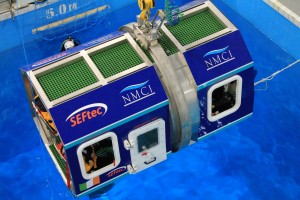
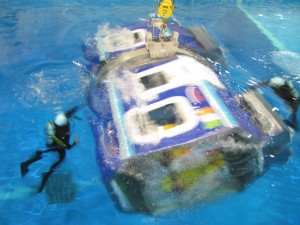
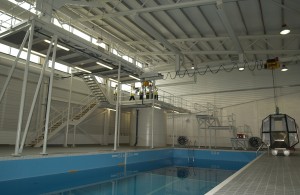
Sign Up to our Newsletter
Click Here
Posted: March 4, 2014
Extract from http://www.irishexaminer.com/business/hobbs-turns-his-fire-on-oil-industry-with-campaign-to-maximise-returns-260729.html
“The first phase of Mr Hobbs’s Own Our Oil campaign was the launch of a book yesterday with the same title that aims to change the public’s attitude to Irish oil resources.
The book looks at Ireland’s geology, policy, taxation, history and planning when it comes to the oil industry and is dedicated to former minister Justin Keating who developed a strict taxation regime for Irish resources in the 70s.
The book is the first part of a campaign that is aiming to challenge the oil and gas industry in Ireland. Mr Hobbs warned that if the oil industry attempted to dismiss his campaign he would “take them apart”.
In the book, Mr Hobbs places a lot of emphasis on the difference in regimes between Ireland and Norway. Norway managed to build a sovereign wealth fund three times larger than Ireland’s national debt by effectively managing its natural resources.
However, the chairman of the Irish Offshore Operators’ Association, Fergus Cahill, said comparing the two countries is a fundamental mistake.
“Norway produce two million barrels of oil a day. We produce none. Norway exports natural gas, we import virtually all of ours. To compare the two is a fundamental mistake,” he said.
Mr Hobbs also drew parallels between the oil companies’ behaviour in Norway and Ireland. Mr Hobbs said that in the 1950s Norway was repeatedly told that there was no offshore oil in Norway.
Mr Cahill said that was what the companies believed at the time and it was only with improved technology that the Norweigian industry developed.
Mr Hobbs said they were not interested in trying to unpick any of the licensing options that are in place, but there was a need to try and maximise future returns from potential assets.
Up to a third of Ireland’s marine territory is already under licence from a period between the 1980s and 2007, when exploration terms signed ownership of various assets over to exploration companies, following then minister for energy Ray Burke’s dismantling of the tough taxation regime Justin Keating had put in place.
This means returns from these assets will disproportionately go to company shareholders and not the Irish taxpayer.”
By Vincent Ryan
Business Reporter
© Irish Examiner Ltd. All rights reserved
Sign Up to our Newsletter
Click Here
Posted: May 22, 2013
Fastnet Oil says independent assessment established presence of significant potential.

An independent assessment of explorer Fastnet Oil and Gas’s Deep Kinsale target off the south coast indicates that it could contain 2.3 billion barrels of oil.
Fastnet said today that an independent assessment of the licence area by SLR Consulting established the presence of a significant potential “unrisked” resource in place of over 2 billion barrels.
The group said that SLR carried out the assessment in accordance with generally accepted international procedures.
In February, Fastnet agreed a deal with Petronas subsidiary Kinsale Energy to farm into the so-called “deep Kinsale prospect”. It lies deep below the existing Kinsale gas field, which has by now given up all but 3 per cent of its reserves.
As part of its deal with Kinsale Energy, Fastnet carried out engineering and geological studies and a wide-ranging, three-dimensional seismic survey.
Fatnet said the independent assessment confirms that oil-bearing sands encountered in the Middle and Lower Wealden wells drilled by Marathon in the early 1970’s occur in the same geological structure that hosts the shallow producing gas sands in the Kinsale gas field.
The Deep Kinsale structure covers an area of up to 162 square km.
“Deep Kinsale is a large anticlinal structure, which has the potential to contain a significant oil accumulation directly beneath the producing Kinsale gas field and the two platforms, in the Celtic Sea,” Fastnet founder shareholder John Craven said.
Earlier this month, the oil and gas company, which is focused on near term exploration acreage in Africa and the Celtic Sea, was awarded a new licensing option in the North Celtic Sea. The option covers blocks in the Mizzen Basin, known as East Mizzen, and the western end of the North Celtic Sea Basin, offshore Ireland.
From The Irish Times-Pamela Newenham
http://www.irishtimes.com/business/sectors/energy-and-resources/deep-kinsale-could-contain-2-3bn-barrels-of-oil-1.1402539
Sign Up to our Newsletter
Click Here
Posted: April 19, 2013
From Offshoretechnology.com 19/04/2013
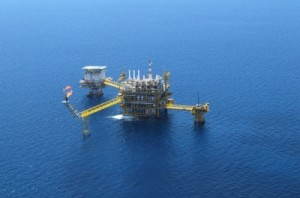
“Europa has signed a farm-in agreement with a subsidiary of Kosmos Energy to acquire its two Licencing Options, LO 11/7 and LO 11/8, in the South Porcupine Basin, offshore of Ireland.
As part of the deal, Kosmos will buy an 85% interest and take up the operatorship of both licences, alongside incurring 100% of the costs of the first exploration well on each block.
The company will also fully fund the cost of a 3D seismic programme on each licence and pay 85% of the costs incurred by Europa to date.
The first exploration wells on LO 11/7 and LO 11/8 have investment caps of $90m and $110m, respectively, while Kosmos will share 85% of the excess costs of the investment cap, with the remaining coming from Europa.
Both LO 11/7 and LO 11/8 cover an area of about 1,000km² each in the prospective South Porcupine basin, while the licences have been mapped using existing 2D seismic data and are currently undrilled.
“The company will also fully fund the cost of a 3D seismic programme on each licence and pay 85% of the costs incurred by Europa.”
Europa has identified two previously unknown prospects in the Lower Cretaceous stratigraphic play – Mullen in LO 11/7 and Kiernan in LO 11/8.
Europa CEO, Hugh Mackay, said Kosmos is an experienced operator in frontier basins and pioneered the Cretaceous stratigraphic play that lead to a major exploration success in the Atlantic margin basins.
“The farm-in provides recognition of the substantial potential value lying in our Irish exploration prospects. The work programme associated with the farm-in has the potential to deliver significant value realisation,” Mackay added.
“Europa’s retained 15% interest exposes the company to substantial upside in the event of drilling success at either or both of these prospects at a much reduced risk and cost to our shareholders.
“We understand that the Eirik Raude rig is in Irish waters to drill Exxon‘s Dunquin well. An exciting new chapter in the exploration of Ireland is starting and we are delighted to be part of it.”
The closing of the farm-in agreement is subject to approval from the Irish Government.”
http://www.offshore-technology.com/news/newseuropa-exploration-south-porcupine-basin-ireland?WT.mc_id=DN_News
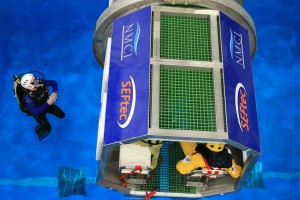
Sign Up to our Newsletter
Click Here









Connect with NMCIS